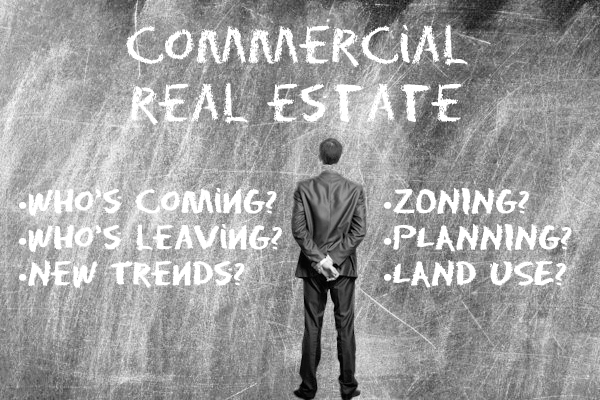|
RCBJ-Audible (Listen For Free)
|
Coworking Provides The Structure And Energy Of The Office Without Surrendering Worker Autonomy And Flexibility
By Paul Adler, Esq.
 In the years since COVID-19 reshaped the American workplace, the conversation about “getting back to the office” has generated more heat than light. Corporate leaders want productivity, collaboration, and culture. Workers want flexibility, autonomy, and a life not defined by a commute. And in the middle, quietly bearing the brunt of this great recalibration, sits the suburban office market—whole buildings, campuses, and business parks struggling under vacancy levels not seen in decades.
In the years since COVID-19 reshaped the American workplace, the conversation about “getting back to the office” has generated more heat than light. Corporate leaders want productivity, collaboration, and culture. Workers want flexibility, autonomy, and a life not defined by a commute. And in the middle, quietly bearing the brunt of this great recalibration, sits the suburban office market—whole buildings, campuses, and business parks struggling under vacancy levels not seen in decades.
But while traditional office leasing remains sluggish—particularly among regional and local tenants who once formed the backbone of suburban occupancy—something else is happening. A different kind of demand is emerging. Professionals, entrepreneurs, remote corporate employees, and hybrid workers are looking for a space that is not their kitchen table, their spare bedroom, or a corner of the basement. They want a place to get dressed, leave the house, be downtown, grab a coffee, see other human beings, and feel connected. In short, they want the structure and energy of the office without surrendering the flexibility they gained during the pandemic.
Enter co-working.
What started years ago as a niche product for startups has matured into an increasingly attractive alternative for today’s workforce. Modern co-working spaces offer far more than open desks and Wi-Fi. They come fully furnished. They are secured by fob access, eliminating the need for on-site reception. They offer shared conference rooms, podcasting studios, private call booths, lounges, coffee bars, event spaces, and the casual collisions that spark conversation and creativity. And while the rent per square foot for these spaces is typically higher than traditional office space, the value proposition is different—and, for many businesses and professionals, far more compelling.
For individuals and small teams, co-working solves the “home office problem”: isolation, distraction, and a lack of boundary between home and work life. Even the most dedicated remote worker can benefit from having somewhere to go. The ritual of getting dressed in the morning, leaving the house, and entering a professional environment matters. Being in a vibrant town center matters. Running into colleagues, peers, or other professionals matters. These simple interactions—and the sense of being part of something larger than oneself—cannot be replicated over Zoom.
For employers, co-working offers a “middle path” between expensive long-term leases and an unstructured remote workforce. Many companies are realizing that hybrid work is here to stay, but that productivity and culture still require some in-person engagement. Co-working spaces allow teams to gather periodically—weekly or monthly—without taking on the burden of a traditional lease. Employees feel more supported and engaged, and employers gain a flexible, scalable solution.
And for suburban landlords, co-working represents an opportunity hiding in plain sight. Large blocks of unrented office space, once difficult to backfill with traditional tenants, are often well suited for co-working conversion. High parking ratios, generous floor plates, strong infrastructure, and proximity to retail can all be leveraged to create vibrant co-working hubs. While the operational model is different from standard leasing, the upside is clear: higher rent PSF, diversified revenue streams, shorter friction periods, and the potential to re-activate buildings languishing in a stagnant leasing environment.
This is particularly important in suburban markets, where traditional leasing is challenged by the absence of national or large regional tenants. Mid-sized professional firms—lawyers, accountants, engineers, consultants, nonprofits, creative agencies—are rethinking their space needs. Many do not want or need 3,000 to 10,000 square feet anymore. Instead, they want turnkey flexibility: a private office or suite, access to amenities, and the ability to scale up or down without penalty.
Co-working meets that need.
To be clear, co-working is not a panacea for the suburban office sector. There will always be organizations that require dedicated spaces, security, and long-term control over their environment. But for a growing share of the workforce—and a growing segment of the market—co-working is the bridge between the post-COVID reality and the return of a more traditional office culture. It provides structure without rigidity. Community without compulsion. Professionalism without the grind.
As we consider the future of our suburban commercial real estate markets, we should treat co-working not as a stopgap response to declining occupancy, but as a strategic opportunity. It can help rebuild foot traffic in our downtowns, support local businesses, and re-establish the daily rhythms that create vibrant communities. It can help workers rediscover the benefits of being part of a shared professional environment—even if only a few days a week.
If “back to the office” means going back to exactly what we had before COVID, that ship has sailed. But if it means finding new ways to work, connect, collaborate, and show up—then co-working may very well be the first step toward a healthier, more sustainable suburban office ecosystem. And for landlords and workers alike, that could be a win-win.
Paul Adler is Chief Strategy Officer of Rand Commercial. paul.adler@randcommercial.com
















